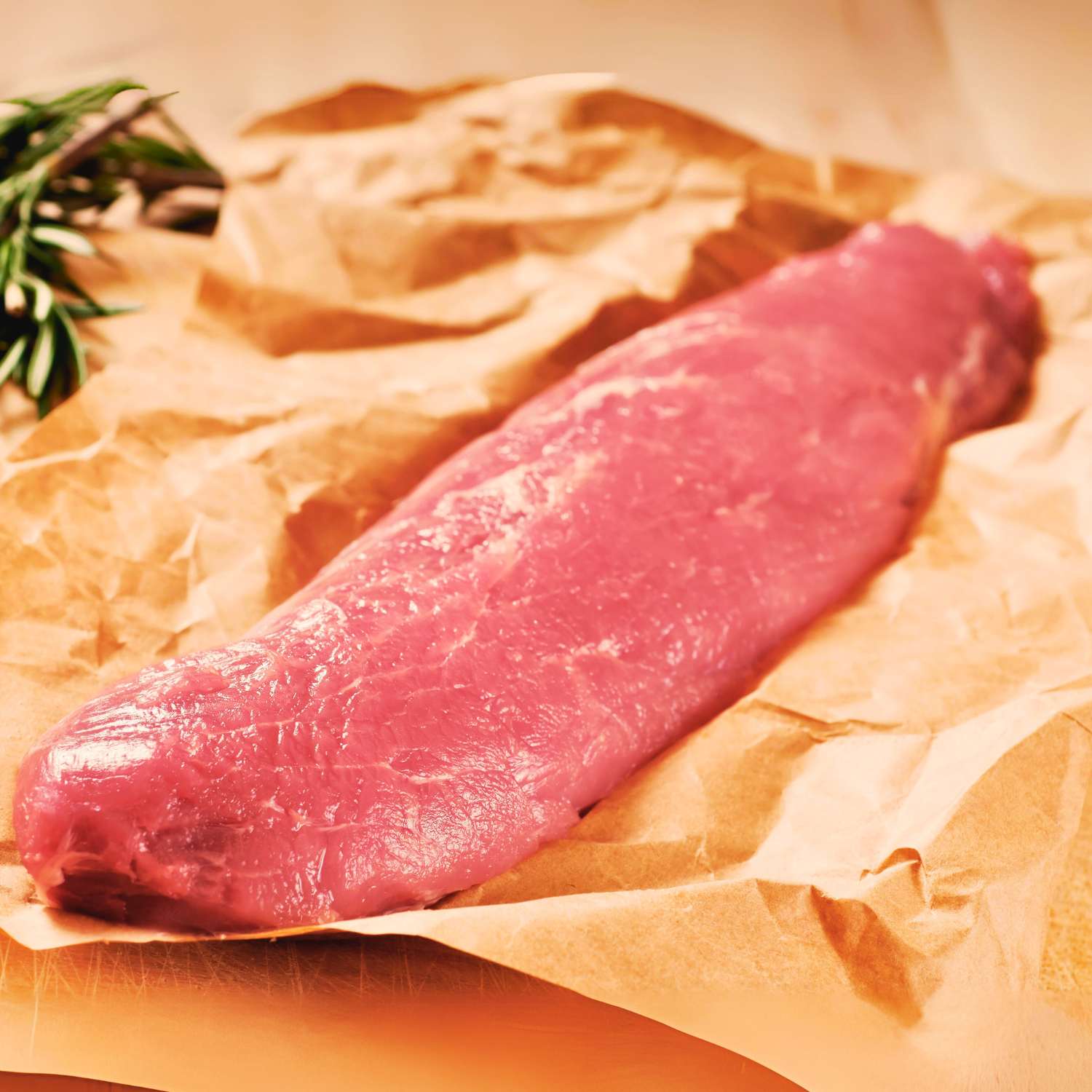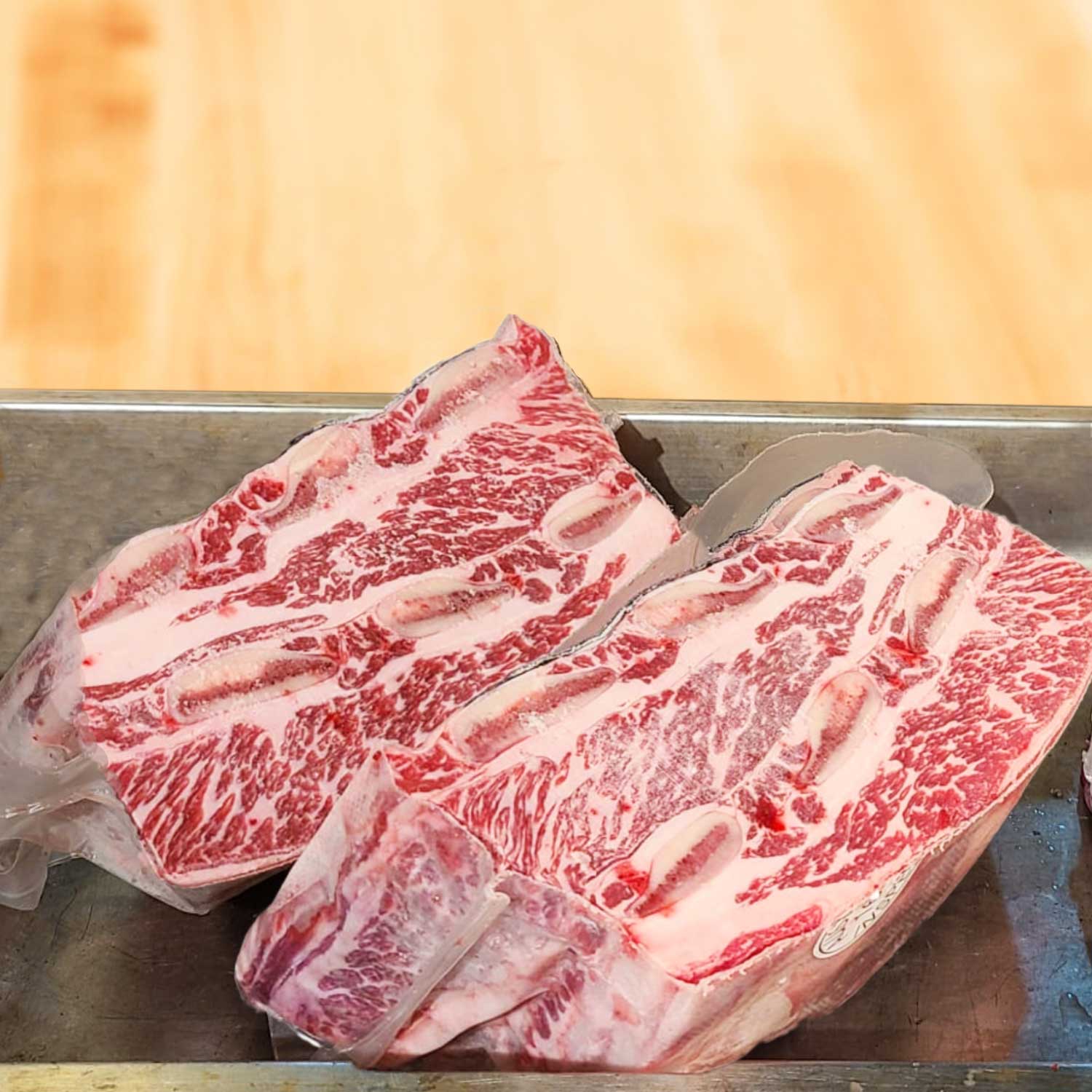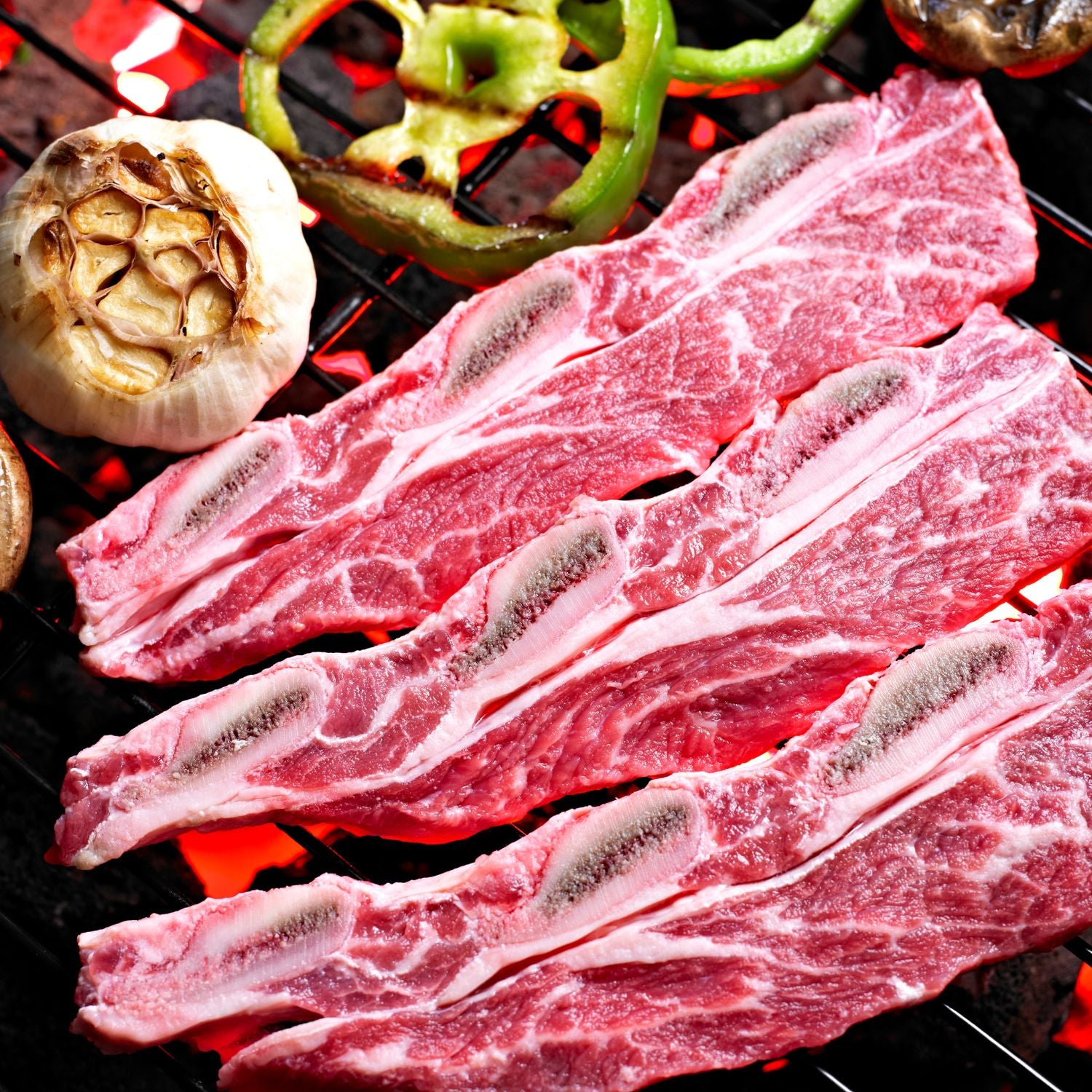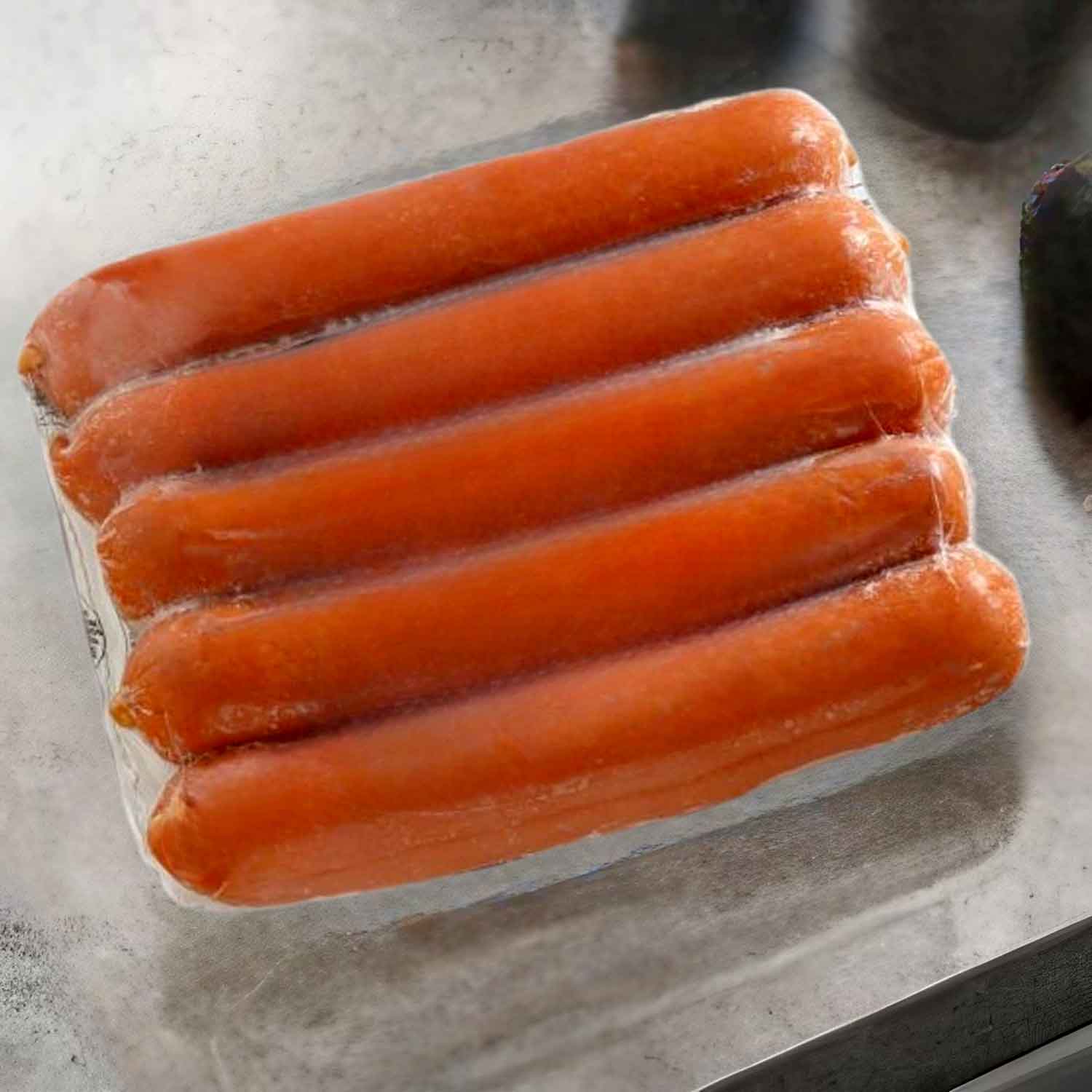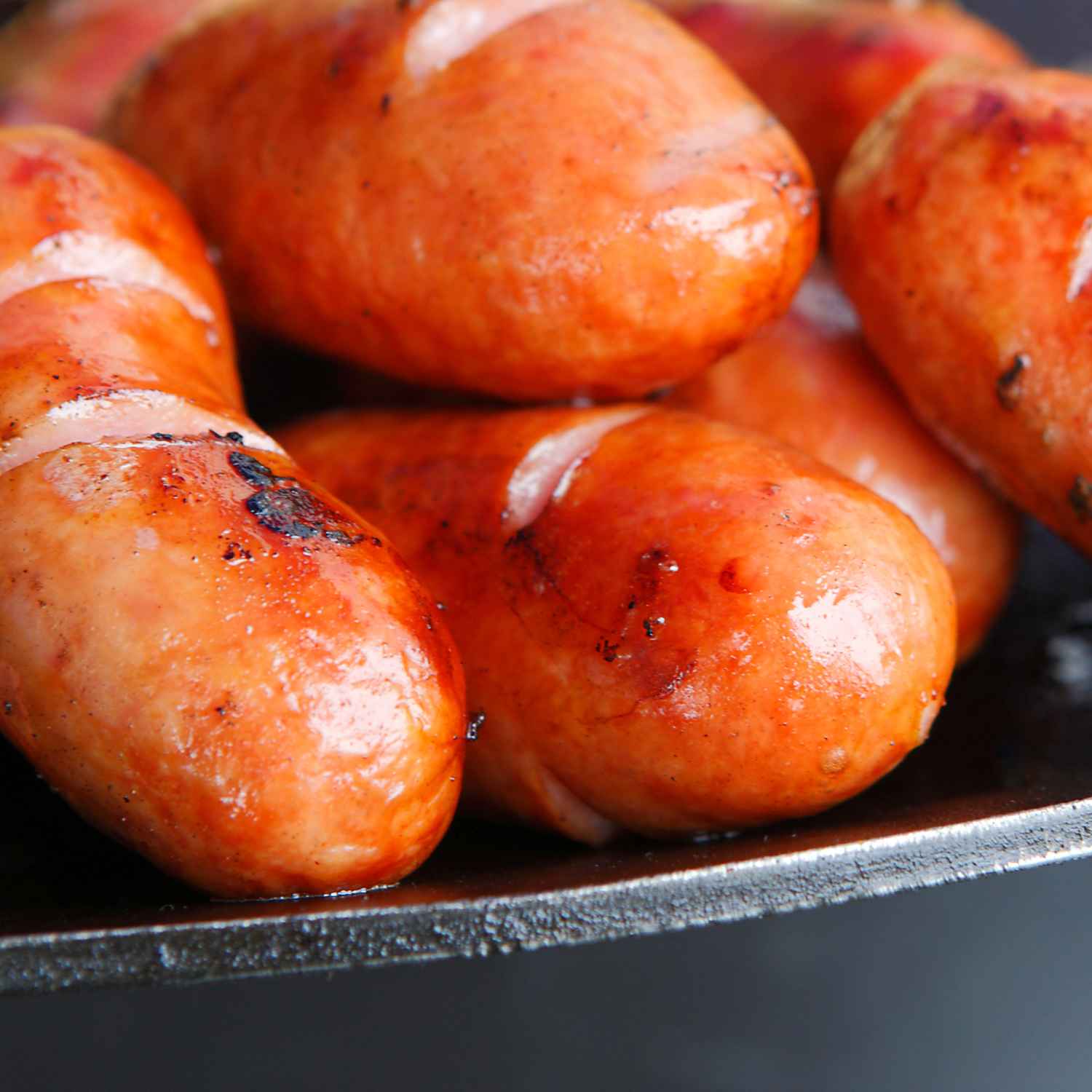Understanding the Basics of Beef Quality
The Difference Between Grass-Fed and Grain-Fed Beef
When choosing beef, consider how it was fed. Cows can eat grass or grain. Grass-fed beef is often leaner and has a different taste. Grain-fed beef usually has more fat. This fat can make the beef taste more tender and rich. In Hong Kong, both types are popular. People like the rich flavor of grain-fed beef. But health-minded eaters prefer grass-fed beef. Both types have unique qualities to offer in dishes.

Evaluating Wagyu Beef: Marbling and Texture
When evaluating Wagyu beef, the key factors are marbling and texture.
- Marbling refers to the white flecks of fat within the muscle.
- These flecks enhance flavor, tenderness, and juiciness.
- Wagyu beef from Japan is known for its high marbling.
- Texture is also crucial. It should be buttery and melt in your mouth.
- For Hong Kong's market, select Wagyu with a good balance of both.
Choosing the right Wagyu beef can transform your dining experience.
Selecting the Right Beef for Hong Kong Palates
When choosing beef in Hong Kong, consider local tastes. Opt for tender cuts like sirloin or ribeye for their juicy flavor. Grass-fed beef is lean and has a distinct taste, while richly marbled wagyu is favored for its buttery texture. For a true Hong Kong experience, find cuts that balance well with traditional sides, such as stir-fried vegetables or rice. Remember, the best beef should have a fresh, vibrant color and a clean smell, indicating quality and freshness. For steaks, thickness matters; thicker cuts allow for better control over doneness. Contact reputable suppliers, like MeatKing.hk, for the best beef in Hong Kong."
Advanced Techniques for Preparing and Cooking Beef
Sous-Vide Cooking: A Game Changer for Steak Lovers
Sous-vide cooking has revolutionized the way we cook steak, especially premium cuts like Wagyu and grass-fed beef. This method involves sealing the beef in a vacuum bag and immersing it in a precisely controlled water bath at a consistent temperature. The results are remarkable – steaks cooked sous-vide are exceptionally tender, with an even doneness from edge to edge, and they retain more of their natural flavors and juices. For steak enthusiasts in Hong Kong, sous-vide cooking offers a foolproof way to achieve the perfect steak every time. This technique also allows for advanced preparation, making it ideal for busy lifestyles while ensuring gourmet-quality meals.
Pan-Searing and Grilling: The Best Methods for a Perfect Steak
For steak enthusiasts in Hong Kong, pan-searing and grilling are revered techniques. Pan-searing requires a hot, heavy skillet and a dash of patience. It creates a crusty, caramelized exterior while keeping the interior juicy. Begin with patting the steak dry and seasoning generously. Heat oil until it shimmers. Sear the steak on high heat until browned. Flip once to ensure even cooking. For grilling, it's all about control. Preheat your grill to create distinct heat zones. Sear over high heat, then move to a cooler part to cook to desired doneness. Remember to let your steak rest before slicing to retain its flavors and juices.
The Role of Temperature in Beef Doneness
Achieving the perfect doneness for your steak is a science. The role of temperature is crucial in this process. For rare steaks, aim for an internal temperature of 50-52°C (122-125°F). Medium-rare, the favorite of many, should be at 55-57°C (131-135°F). For medium, 60-63°C (140-145°F) is ideal, and well-done steaks should reach 68°C (154°F) and above. Remember, steaks will continue to cook even after removed from the heat, so aim for a few degrees below your target when taking them off the grill or pan.
Infusing Flavors and Traditional Hong Kong Techniques
Hong Kong's Favorite Steak Sauces and Marinades
Steak lovers in Hong Kong have unique tastes, often merging Western and Asian influences. The result is a variety of sauces and marinades that enhance the beef experience.
Here are some popular choices:
- Soy and Oyster Sauce Marinade: A staple in Hong Kong kitchens, this blend provides a savory umami kick to the beef.
- Black Bean Garlic Sauce: This adds a rich, fermented depth to steaks. It's great for grilling or pan-searing.
- Hoisin and Honey Glaze: Sweet and tangy, this glaze caramelizes beautifully on the meat’s surface.
- Five-Spice Dry Rub: This aromatic mix introduces a traditional Chinese flavor profile to the steak.
These marinades and sauces not only tenderize the beef but also align well with Hong Kong's culinary traditions.
Integrating Chinese Flavors into Western Beef Dishes
Fusing East and West in your kitchen can be exciting. For beef dishes with a Hong Kong twist, consider using Chinese spices and sauces. A classic approach is to use oyster sauce. It adds a rich, savory depth to steaks. Five-spice powder can also elevate the flavor profile. It's a blend of cinnamon, cloves, fennel, star anise, and Szechuan peppercorns. Try rubbing it on steak before cooking. Another tip is to marinate beef in soy sauce, ginger, and garlic. These ingredients add umami and a hint of warmth. Don’t forget the power of green onions and cilantro. They bring freshness to hearty beef dishes. Last is the black bean sauce. It gives an authentic Cantonese taste to any western-style beef preparation. These pairings will surely impress both local and international palates.
Tips on Pairing Beef with Hong Kong's Famous Cuisine
When pairing beef with Hong Kong cuisine, consider these tips:
- Match rich wagyu with simpler sides to let its flavor shine.
- Grass-fed beef pairs well with bold Cantonese spices.
- Use oyster or soy sauce to bridge beef with local dishes.
- A side of stir-fried veggies can complement a seared steak.
- Try beef with traditional dim sum for a unique twist.
These pairings balance taste and tradition for a Hong Kong palate.















